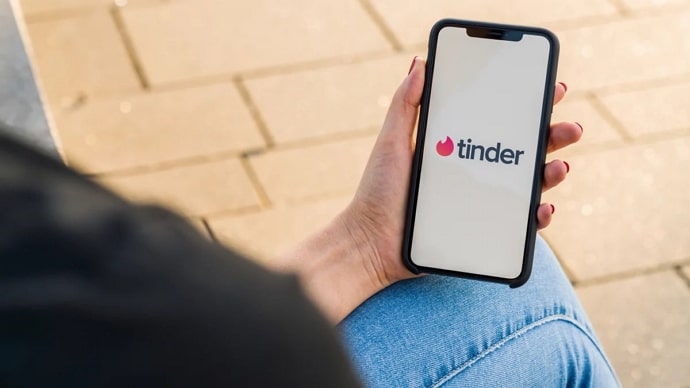In today’s fast-paced digital age, time is limited, and technology is at our fingertips. Finding potential romantic partners has thus undergone a significant transformation. Gone are the days of relying on chance encounters or introductions through mutual friends. Online dating platforms have now taken center stage, connecting people and bringing them together with a simple swipe. Among these, Tinder stands out as a trailblazer, revolutionizing dating and making it more convenient than it ever was before.

Launched in 2012, Tinder quickly gained popularity as a location-based dating app that introduced a unique and intuitive approach to finding potential matches. The app seeks to simplify the dating process by combining technology, user-friendly design, and the fundamental human desire for connection.
The concept of Tinder is simple: users create a profile and then swipe through profiles displayed based on their geographic proximity. Swiping right indicates interest while swiping left dismisses the profile. A match is formed if two users swipe right on each other, enabling them to start a conversation.
Tinder’s user-friendly interface makes it accessible to individuals of all tech-savviness levels. Creating a profile is easy, involving a few steps to showcase your personality and interests through photos and a bio. This ensures that even those new to online dating can jump right in.
Tinder’s influence extends far beyond its convenience factor. It has created a diverse and interconnected community of individuals seeking romantic connections. With millions of users worldwide, Tinder has become a melting pot of experiences, perspectives, and backgrounds.
Tinder’s emphasis on visual elements like profile photos and brief bios allows users to connect based on attraction and shared interests. While some argue this approach focuses primarily on appearance, Tinder has struck a balance between visual appeal and meaningful interactions.
Today’s blog will discuss if Tinder shows your profile to both genders.
Does Tinder Show Your Profile to Both Genders?
One common question that users often ask is whether Tinder shows your profile to both genders. The answer is no; it doesn’t; unless you want it to. You see, all users can set their preferences on the gender they’re interested in, and that’s the gender they’ll be visible to.
However, on occasion, it’s possible that you might appear in the stack of users who are not your target potential match. But don’t worry; it’s a once-in-a-blue-moon occurrence.
In today’s blog post, we are going to explore this topic and shed light on how Tinder handles profile visibility.
Understanding Tinder’s algorithm
To understand how Tinder handles profile visibility, let’s first see its underlying algorithm. While the exact details of Tinder’s algorithm are closely guarded, we can draw insights based on user experiences and available information.
Gender and sexual orientation settings: When setting up a Tinder profile, users can select their gender and specify their sexual orientation. This information helps Tinder determine the appropriate pool of potential matches for that user.
For example, if a user on Tinder identifies as a woman interested in men, Tinder will predominantly display profiles of men interested in women.
Matching preferences: Tinder’s algorithm takes into consideration the matching preferences users specify. If a user sets their preference to both genders, they’ll see profiles of individuals who match their selected criteria, regardless of gender. However, matching preferences can often vary.
Profile visibility
Tinder’s approach to profile visibility is also influenced by multiple factors.
Location-based visibility: Tinder primarily displays profiles based on geographic proximity. It uses the location data provided by the user’s device to show potential matches nearby.
The purpose of this approach is to facilitate real-world connections, as users can meet up if they’re interested in each other.
Reciprocal swiping: Tinder operates on the principle of mutual interest. A match is created when both users swipe right on each other’s profiles. This enables them to start a conversation. This approach is to ensure both parties have expressed a level of interest before connecting.
Display preferences: While Tinder aims to respect users’ preferences, it also considers the preferences of others. For example, if a user on Tinder identifies as a woman interested in men, the platform will predominantly show their profile to men who are interested in women. But this doesn’t mean their profile will be invisible to other genders or orientations. Tinder might occasionally display the profile to those with different preferences.
Still, the emphasis will be on showing the profile to those who align with the user’s stated preferences.
In conclusion
As our blog for today draws towards an end, let us quickly wrap it up for you.
Tinder’s profile visibility is based on a few factors, including the user’s gender and sexual orientation settings, matching preferences, and location-based visibility. While Tinder mostly displays profiles to those who match the user’s specified preferences, there could be occasional variations based on other factors.
Tinder’s algorithm is complex and constantly evolving to improve user experience. It strives to provide users with relevant and meaningful matches while maintaining a balance with other factors.
Tinder’s aim is to create connections between users who express mutual interest. By providing users with a platform to showcase profiles to potential matches, Tinder fosters real-world connections and creates opportunities for meaningful relationships to flourish.
If our blog has helped you in your due diligence before signing up on Tinder, we’re glad we could be of help. Let us know if you have got any more questions or doubts in the comments below!
Also Read:





 Bitcoin
Bitcoin  Ethereum
Ethereum  Tether
Tether  XRP
XRP  Solana
Solana  USDC
USDC  Dogecoin
Dogecoin  Cardano
Cardano  TRON
TRON